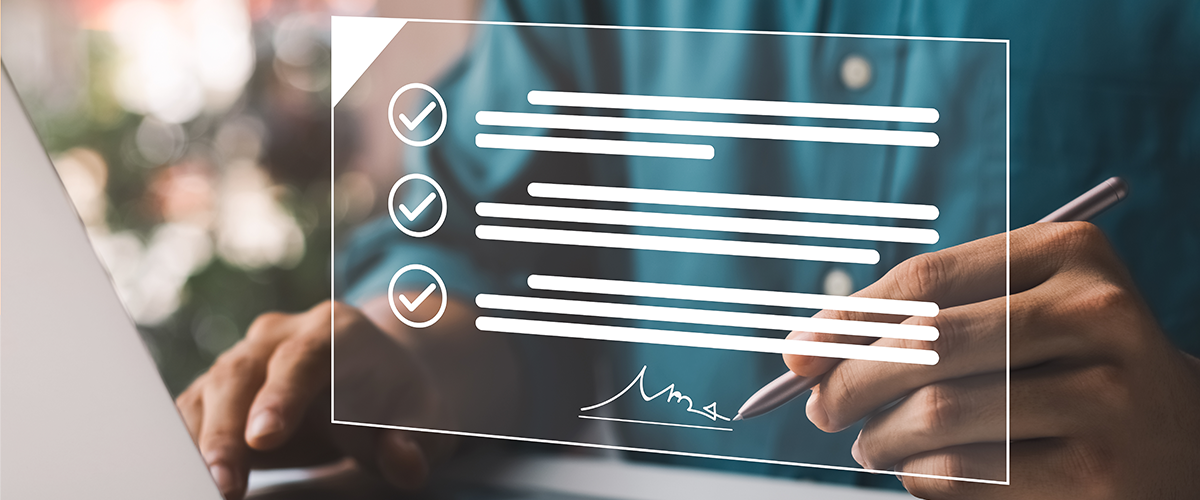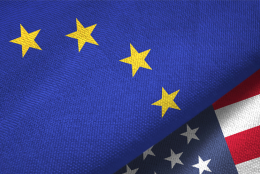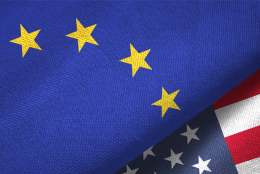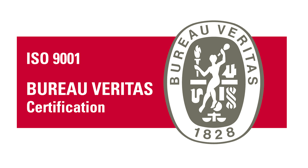Article

EP and US patent offices expand their uses of e-signatures
The EPO and the USPTO have issued recent decisions to expand the use of e-signatures, including the use of commercial solutions such as DocuSign® or Adobe Sign®. The move of the patent offices responds to a desire to provide convenience to patent applicants and owners, and practitioners.
EPO
In a nutshell
Starting April 1st, 2024, the EPO will accept a broader range of digital signatures when submitting evidence (e.g. assignments, licensing agreements) for the requests for registration of transfer of rights registration of grants, transfers and cancelations of licenses and other rights submitted to the EPO under Rules 22, 23, 24 and 85 EPC. These changes will apply to documents related classic European patents as well as unitary patents.
The change of April 1st stems from a decision of the President of the European Patent Office dated February 9, 2024, on signatures on contracts and declarations under Rules 22 and 85 and Rule 23 EPC.
While the EPO has tried in the past to authorize e-signatures, in practice quasi exclusively handwritten signatures on paper or scanned documents were successfully accepted. With the changes of April 1st, the digital signatures of those of widely used commercial e-signatures solutions will be accepted. As a result, contracts (such as transfer of patent ownership) signed using qualified trusted service providers in compliance with the EU's eIDAS Regulation, for example DocuSign® or Adobe Sign®, will now be accepted by the EPO.
The EPO will offer the possibility of filing the requests for registration on the new interface: MyEPO Portfolio. By doing so, starting April 1st, no administrative fee will be due for the requests for registration filed using MyEPO Portfolio.
Types of digital signatures accepted
Technically speaking, the forms of digital signatures accepted are digital signatures that use Public Key Infrastructure (PKI) technology, including advanced and qualified electronic signatures within the meaning of the EU's eIDAS Regulation, and digital signatures that do not use PKI technology if they are filed electronically, are legible, are not infected with a computer virus and do not contain other malicious software.
Authenticity
The EPO does not examine the authenticity of the signature. If there is a doubt over its authenticity, the EPO will require clarification and may request further evidence.
Entitlement
Entitlement of a signatory person by virtue of her or his position within the legal person will no longer be checked by the EPO. This position must be expressly indicated however.
USPTO
In a nutshell
Effective on March 22, 2024, the USPTO will also accept the e-signatures solutions of commercial solutions such as DocuSign® and Adobe Sign® to fulfill the signature requirements of documents submitted to the USPTO. Note that this does not concern the rules of signatures of assignments, but only the correspondence between to the office and documents related to the office’s practice. While declarations are within the realm of the USPTO rules for example, signatures on assignments are governed by federal and state law.
Handwritten signatures, facsimile signatures (a.k.a. graphic representations) and text string signatures (a.k.a. S-signatures) will continue to be accepted. If the correspondence is signed using a graphic representation of a hand signature or a S-signature, it must be filed using USPTO patent electronic filing system. The S-signature may be generated using a commercial software (e.g., DocuSign, Dotloop, Adobe).
Prior to the change of March 22, the USPTO did allow patent correspondence to be electronically signed without being submitted via the USPTO patent electronic filing system. However, thanks to the newly added rule (37 CFR 1.4(d)(4)), the electronic signature may be used whether the correspondence is being submitted via the USPTO patent electronic filing system, mailed, faxed, or hand delivered. In addition, the insertion of the two forward slashes for S-signatures is no longer required.
The new rule does not change any other requirements for signatures on patent correspondence, including that a signature must be personally inserted or generated by the named signer.
Sources:
- https://www.epo.org/en/legal/official-journal/2024/02/a17.html
- https://www.epo.org/fr/news-events/news/transferts-et-licences-changeme…
- https://eidas.ec.europa.eu/efda/tl-browser/#/screen/home
- https://www.govinfo.gov/content/pkg/FR-2024-03-22/pdf/2024-06126.pdf
- https://www.uspto.gov/sites/default/files/documents/uspto_signatures_ju…;





























